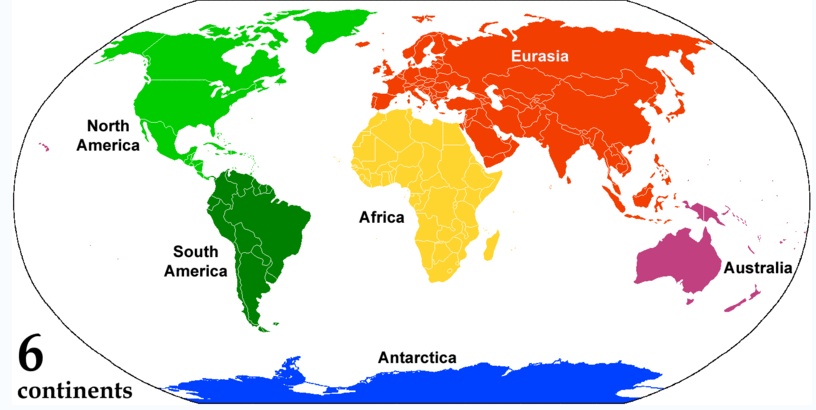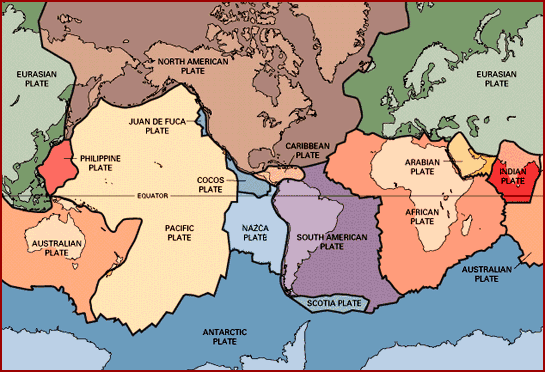2.1.8: Los Continentes
- Page ID
- 91961
\( \newcommand{\vecs}[1]{\overset { \scriptstyle \rightharpoonup} {\mathbf{#1}} } \)
\( \newcommand{\vecd}[1]{\overset{-\!-\!\rightharpoonup}{\vphantom{a}\smash {#1}}} \)
\( \newcommand{\id}{\mathrm{id}}\) \( \newcommand{\Span}{\mathrm{span}}\)
( \newcommand{\kernel}{\mathrm{null}\,}\) \( \newcommand{\range}{\mathrm{range}\,}\)
\( \newcommand{\RealPart}{\mathrm{Re}}\) \( \newcommand{\ImaginaryPart}{\mathrm{Im}}\)
\( \newcommand{\Argument}{\mathrm{Arg}}\) \( \newcommand{\norm}[1]{\| #1 \|}\)
\( \newcommand{\inner}[2]{\langle #1, #2 \rangle}\)
\( \newcommand{\Span}{\mathrm{span}}\)
\( \newcommand{\id}{\mathrm{id}}\)
\( \newcommand{\Span}{\mathrm{span}}\)
\( \newcommand{\kernel}{\mathrm{null}\,}\)
\( \newcommand{\range}{\mathrm{range}\,}\)
\( \newcommand{\RealPart}{\mathrm{Re}}\)
\( \newcommand{\ImaginaryPart}{\mathrm{Im}}\)
\( \newcommand{\Argument}{\mathrm{Arg}}\)
\( \newcommand{\norm}[1]{\| #1 \|}\)
\( \newcommand{\inner}[2]{\langle #1, #2 \rangle}\)
\( \newcommand{\Span}{\mathrm{span}}\) \( \newcommand{\AA}{\unicode[.8,0]{x212B}}\)
\( \newcommand{\vectorA}[1]{\vec{#1}} % arrow\)
\( \newcommand{\vectorAt}[1]{\vec{\text{#1}}} % arrow\)
\( \newcommand{\vectorB}[1]{\overset { \scriptstyle \rightharpoonup} {\mathbf{#1}} } \)
\( \newcommand{\vectorC}[1]{\textbf{#1}} \)
\( \newcommand{\vectorD}[1]{\overrightarrow{#1}} \)
\( \newcommand{\vectorDt}[1]{\overrightarrow{\text{#1}}} \)
\( \newcommand{\vectE}[1]{\overset{-\!-\!\rightharpoonup}{\vphantom{a}\smash{\mathbf {#1}}}} \)
\( \newcommand{\vecs}[1]{\overset { \scriptstyle \rightharpoonup} {\mathbf{#1}} } \)
\( \newcommand{\vecd}[1]{\overset{-\!-\!\rightharpoonup}{\vphantom{a}\smash {#1}}} \)
Un continente suele ser considerado como una gran masa de tierra intacta completamente rodeada de agua, aunque algunos no lo son. Existen varios modelos de continentes, dos de los cuales se representan en\(\PageIndex{1}\) la Figura El modelo de siete continentes de América del Norte, América del Sur, Europa, Asia, África, Australia y la Antártida se definen por convenciones físicas y culturales. Considerada un continente separado en el modelo de los siete continentes, Europa es una extensión física de Asia, llamada en conjunto el “continente euroasiático” en el modelo de seis continentes. Los montes Urales y el Cáucaso se utilizan como límite entre Europa y Asia. Los grupos insulares del Pacífico se agrupan como Oceanía pero no son partes de un continente real.

Figura\(\PageIndex{1a}\): Modelo de los Siete Continentes
(Cortesía de Wikipedia)

(Cortesía de Wikipedia)
Los geólogos ven los continentes de una manera diferente a los geógrafos, un continente se define como una porción de la corteza terrestre fracturada. La corteza continental está compuesta principalmente por roca granítica, mientras que la corteza oceánica es principalmente roca basáltica. Estas piezas fracturadas se denominan “tectónicas” o “placas litosféricas”.



